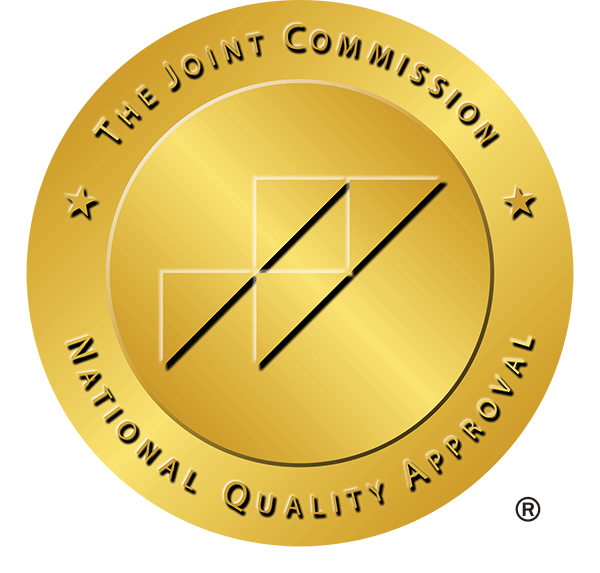Table of Contents
What is a Meth overdose?
A meth overdose is a medical emergency in which a dangerous amount of meth has entered the body. There are a variety of signs and symptoms of this type of overdose. The exact signs of meth oversupply, however, can vary depending on the individual and the method of injection.
Snorting Meth
Snorting meth involves administrating the substance through the nose by inhaling the powder, like many other substances. It creates faster absorption into the body, increasing the impact on the central nervous system.
Injecting Meth
When meth is injected, the powder is dissolved in water or a similar fluid and injected directly into the bloodstream. This method of use can cause increased absorption but may also increase the risks of severe side effects, including heart failure.
Smoking Meth
Smoking meth is the most common form of abuse for crystal meth. Small pieces are broken off the original “rock” of crystal meth and then smoked for inhaled abuse. Smoking meth introduces additional effects by damaging the lungs and respiratory system.
Polysubstance Use
Polysubstance abuse occurs when meth addiction is abused alongside other substances. It greatly increases the likelihood of overdose and long-term effects, which we will discuss later in this article.
Meth Overdose
While a meth ooversupply often refers to a medical emergency, it is not a single occurrence. An overdose can occur either acutely, which is the most common cause, or chronically.1 A meth oversupply is a serious situation, and if you or someone you know seems to be suffering from this issue, seek medical help right away.
Acute Overdose
An acute overdose occurs when meth is introduced to the body and dangerous side effects occur. This type of overdose is what people usually picture when they imagine a meth overdose occurring. An acute overdose can occur to both those who are using a substance for the first time or those with a history of substance abuse.
Chronic Overdose
A chronic overdose occurs when someone has consistently used a substance, such as meth, for an extended period. Over time, the body begins to display effects of meth abuse which can accumulate into an overdose.
What is Polysubstance Abuse?
Polysubstance abuse occurs when multiple substances are misused at the same type. This type of abuse can include meth and a combination of other substances. Polysubstance abuse can be both intentional and accidental, and it can occur between illicit substances or prescription medications.2
Drugs That Are Used In Polysubstance Abuse
Polysubstance abuse can occur when any combination of substances is abused. This type of drug abuse can include illicit substances, controlled substances, prescription medication, and even alcohol. Some of the most common and most dangerous combinations include alcohol.
Dangers Associated With Polysubstance Abuse
Since polysubstance abuse combines multiple substances, several life-threatening risks may occur. These issues include the risk of interactions as well as a higher risk of overdose due to the intake of multiple substances.
Why Is Meth Overdose Death on the Rise?
Throughout a four-year study, meth oversupply deaths tripled. While the exact cause of this increase isn’t known, there are several possible reasons why the rate of meth deaths is on the rise.3 These factors co-exist, each one influencing the other, but can also be observed alone.

Racial and Ethnic Factors
Racial and ethnic disparities are a prevalent trend in meth abuse and overdose.4 While the exact cause of this disparity is unknown, it is observed in several studies.
Decreased Access to Education
The decreased access to education in rural areas has been studied and shown a significant impact on the statistics of drug abuse and meth overdose.5
High Rates of Poverty
Linked with decreased access to education, poverty is another significant factor in the increasing rates of addiction and overdose. Poverty creates limitations in accessibility to basic needs, including education and health care, which can result in an increased percentage of substance abuse.
Health Services Accessibility
There are many forms of treatment available for meth addiction, including addiction centers and drug detoxes. However, due to the availability of insurance, health services may not be accessible to everyone, especially those in the above demographics.
As a result, fewer individuals can access proper preventative care. Moreover, in the instance of a meth oversupply, people may be unable to access the necessary treatment.
What Causes Someone to Overdose on Meth?
An overdose occurs anytime the body is exposed to too much of a substance. However, there are certain situations where overdose is more likely, such as polysubstance abuse.
Dependence
When dependency forms, it can cause the need for more frequent doses. Over time, it can place a strain on the body and cause an accumulation of the substance in the body, especially when there is little to no time between doses, leading to an overdose.
Tolerance
As time goes on, the body will grow used to a dose of a substance, making it no longer effective. To receive the same feelings of euphoria, someone may increase the amount of meth being abused. If the dose is high enough, or if too many doses occur in a short period, it can cause an overdose.
How Much Meth Does It Take to Overdose?
There is no exact dosage guaranteed to result in an overdose. How the body reacts to a substance depends on the individual.
Meth Overdose Statistics
Since 1999, the total of national annual overdose deaths each year has increased by eighteen times the original 547 at the beginning of the survey.6 This statistic is only one demonstration of the rise in overdoses, with the same study also demonstrating an increase in polysubstance abuse and overdoses occurring with meth.
What Happens to Your Body When You Overdose on Meth?
Just as meth can impact the body, as can an overdose. Some of the most common signs and symptoms of a meth overdose that may occur include:
- Agitation
- Psychosis
- Hypertension
- Hallucinations
- Trouble breathing
- Increased heart rate
- Loss of consciousness
- Paranoia
What to Do if Somone Overdoses on Meth
Meth oversupply is considered a medical emergency. Taking the appropriate steps is important to help reduce the risk of long-term effects and even death.
- Information on the drug user: If someone is suspected of experiencing a meth overdose, it is important to be prepared to provide as much information as possible. This information includes the type of methamphetamine abused, the method of abuse, as well as the current signs of meth overdose that they may be displaying.
- Call 911: As a meth oversupply is a medical emergency, it is important to call the proper authorities for aid. In the United States, dial 911. The dispatcher may provide additional instructions to alleviate the signs and symptoms of meth overdose as well as life-saving techniques if needed until the proper professionals arrive.
Is There Meth Overdose Treatment?
Meth overdoses can be treated and even sometimes reversed with proper treatment.
Oral Activated Charcoal
Charcoal is a natural purifier used to treat a variety of illnesses and conditions, including poisoning. A meth overdose is, in essence, meth poisoning. As a result, charcoal can be beneficial when dealing with a less severe overdose or paired with other treatments.
IV Fluids
Not only can IV fluids help restore hydration lost to common overdose signs and symptoms such as vomiting, but they can also be used to introduce medicines such as naloxone, which reverses the effects of a meth overdose.
Medications
While naloxone is the most common, other medicines can be used in the case of an overdose. These types of medication can work to reverse the effects of an overdose while also helping to curb the effects of Meth withdrawal that may occur during recovery.
Resources
- https://medlineplus.gov/ency/article/007480.htm
- https://www.cdc.gov/stopoverdose/polysubstance-use/index.html
- https://www.nih.gov/news-events/news-releases/methamphetamine-involved-overdose-deaths-nearly-tripled-between-2015-2019-nih-study-finds
- https://www.ncbi.nlm.nih.gov/pmc/articles/PMC4352094/
- https://www.eurekalert.org/news-releases/864954
- https://www.drugabuse.gov/publications/research-reports/methamphetamine/what-scope-methamphetamine-misuse-in-united-states




